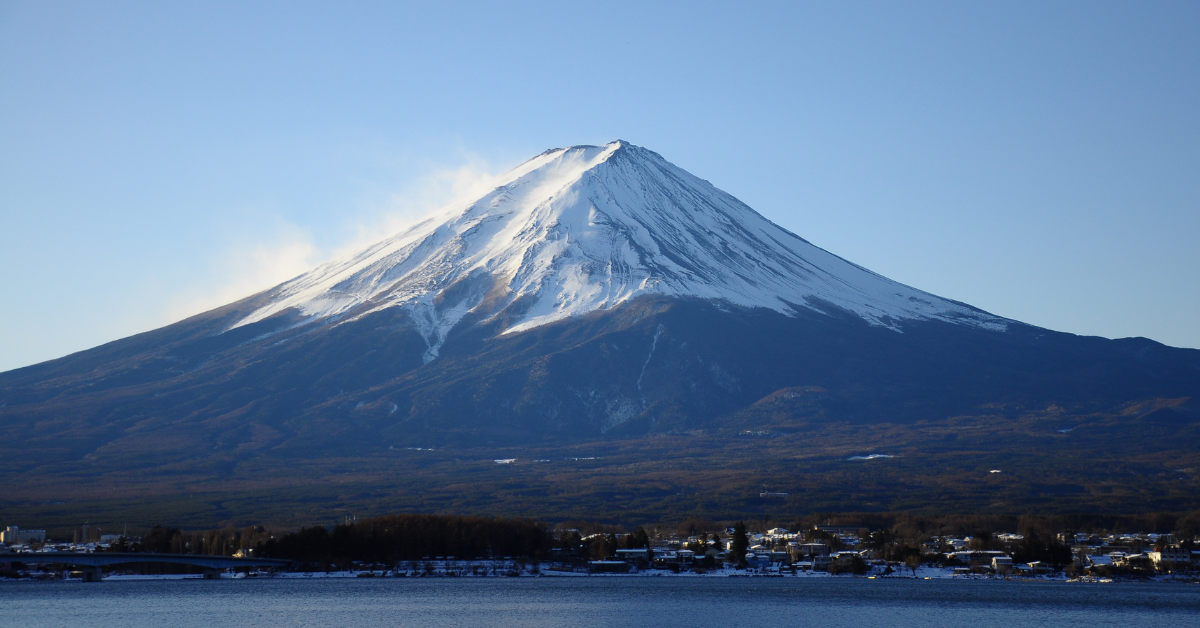Mt. Fuji, standing at 3,776 meters, is Japan’s highest peak and a symbol recognized worldwide. Straddling Yamanashi and Shizuoka prefectures, this majestic mountain offers breathtaking views in every season, from cherry blossoms in spring to snow-covered peaks in winter. Whether your goal is to climb to the summit or explore its scenic surroundings, Mt. Fuji promises an unforgettable experience.
Basic Information and Location
Mt. Fuji rises to 3,776 meters, making it the tallest peak in Japan. Located on the border between Yamanashi and Shizuoka, it is easily accessible from Tokyo, making it a convenient destination. Historically revered as a sacred mountain, it has been a frequent subject in Japanese art and literature.
| Item | Details |
|---|---|
| Elevation | 3,776 m |
| Location | Yamanashi Prefecture & Shizuoka Prefecture |
| UNESCO World Heritage Registration | 2013 (Cultural Heritage) |
| Climbing Season | Early July to Early September |
| Main Trails | Yoshida, Subashiri, Gotemba, Fujinomiya |
In 2013, Mt. Fuji was registered as a UNESCO World Cultural Heritage site. Its value lies not only in its natural scenery but also in its religious and artistic significance. Spring brings cherry blossoms and snow-capped peaks, summer offers lush greenery, autumn features vibrant foliage, and winter unveils a pristine white mountain—each season offering its own distinct charm.
History and Cultural Significance
From ancient times, Mt. Fuji has been worshipped as a sacred site. It served as a place for mountain worship and ascetic training. The mountain has been depicted countless times in art, most famously in Katsushika Hokusai’s “Thirty-six Views of Mt. Fuji”, recognized worldwide.
Its cultural value lies in symbolizing the spirituality and aesthetic sense of the Japanese people. The mountain’s nearly symmetrical cone shape, often called the “perfect mountain,” is highly admired by international visitors. This shape was formed over thousands of years of volcanic activity.
Climbing Routes and Attractions
Climbing Mt. Fuji is only possible during the short summer season, yet it draws climbers from across Japan and the globe. There are four main routes, each with unique features.
| Trailhead | Features | Difficulty |
|---|---|---|
| Yoshida | Many mountain huts, beginner-friendly | Medium |
| Subashiri | Rich forest areas | Medium |
| Gotemba | Longest distance, for advanced climbers | High |
| Fujinomiya | Shortest route to the summit | Medium |
One of the greatest attractions of climbing is witnessing the sunrise, known as Goraikō, from the summit. The view is mystical and unforgettable. However, due to the high elevation, climbers must prepare carefully to avoid altitude sickness.
Surrounding Sightseeing Spots
The Mt. Fuji area offers numerous attractions beyond climbing. On the Yamanashi side, the Fuji Five Lakes—Kawaguchiko, Yamanakako, Saiko, Shojiko, and Motosuko—offer scenic views of the mountain reflected in their waters. On the Shizuoka side, you can enjoy natural wonders like Shiraito Falls and Miho no Matsubara.
| Region | Spot | Highlights |
|---|---|---|
| Yamanashi | Kawaguchiko | Famous for Mt. Fuji photography |
| Yamanashi | Yamanakako | Resort facilities by the lake |
| Shizuoka | Shiraito Falls | Part of the UNESCO site |
| Shizuoka | Miho no Matsubara | View of Mt. Fuji over the sea |
Best Seasons and Travel Tips
The best season to visit Mt. Fuji depends on your purpose. For climbing, July to September is safest. For sightseeing and photography, Mt. Fuji is beautiful year-round. Winter often offers the clearest views, with crisp air and vivid colors.
Travel tips: Weather around Mt. Fuji can change suddenly, so bring rain gear and warm clothing, even in summer. High-altitude conditions mean lower temperatures, so layering is recommended.
Conclusion
Mt. Fuji is more than just a mountain—it is a symbol of Japan’s cultural identity and aesthetic values. With its majestic shape, seasonal beauty, and a wealth of climbing and sightseeing options, it is truly a destination that every traveler should experience at least once. For a safe and enjoyable trip, thorough preparation and up-to-date information are essential.






